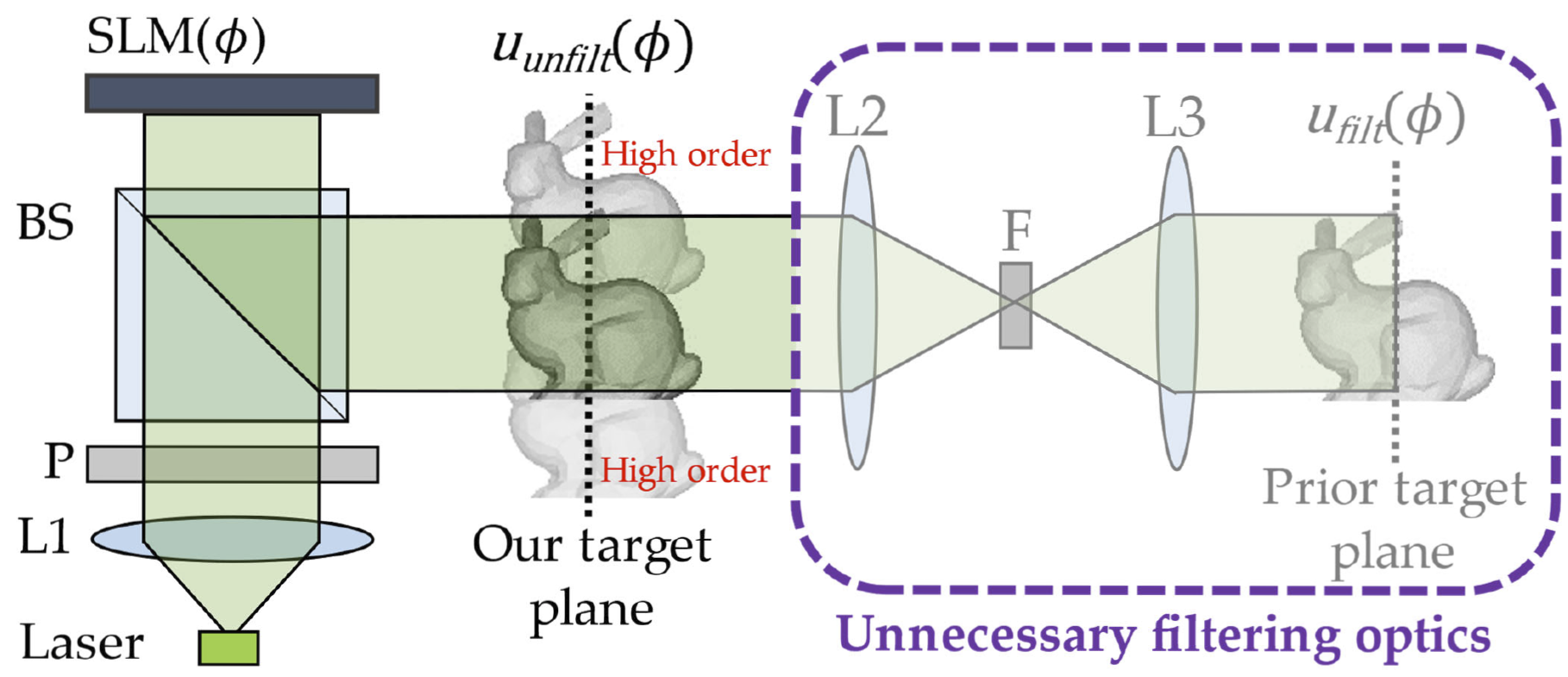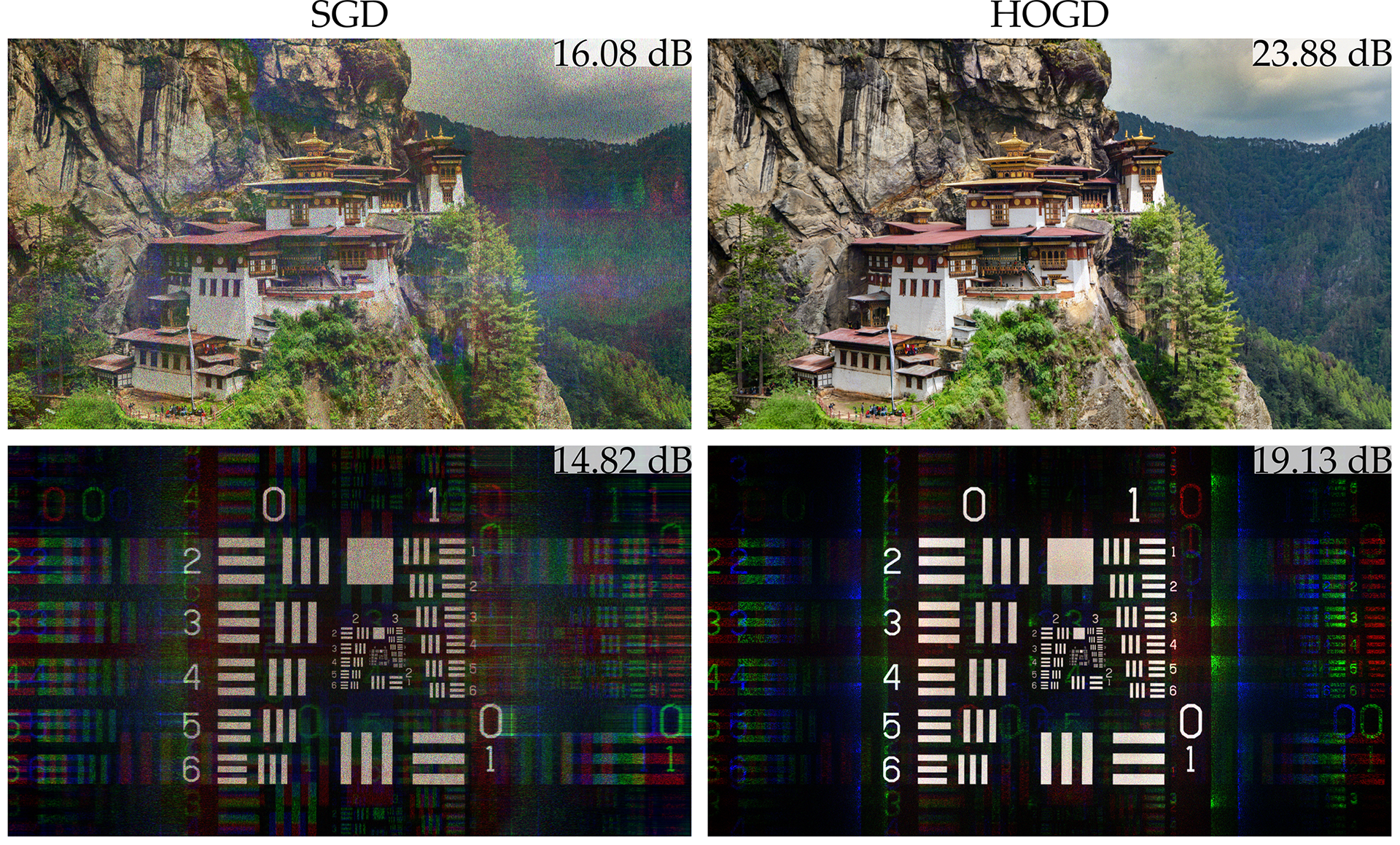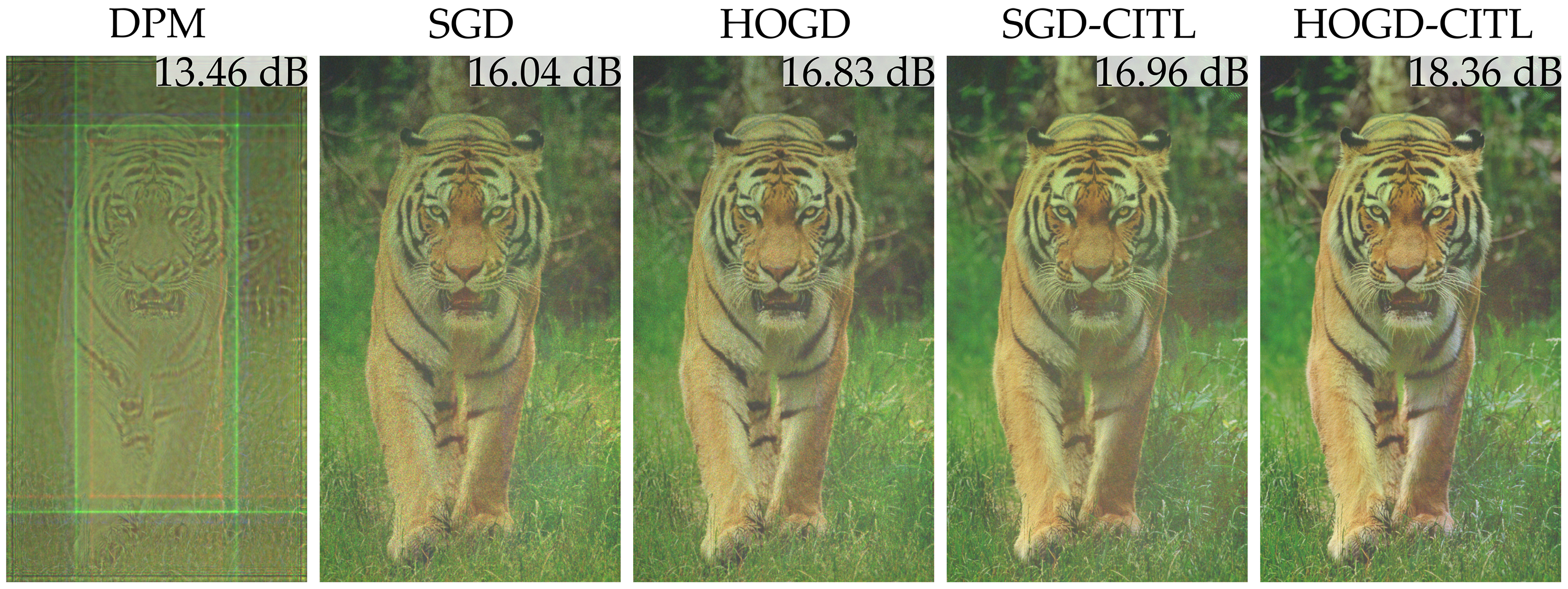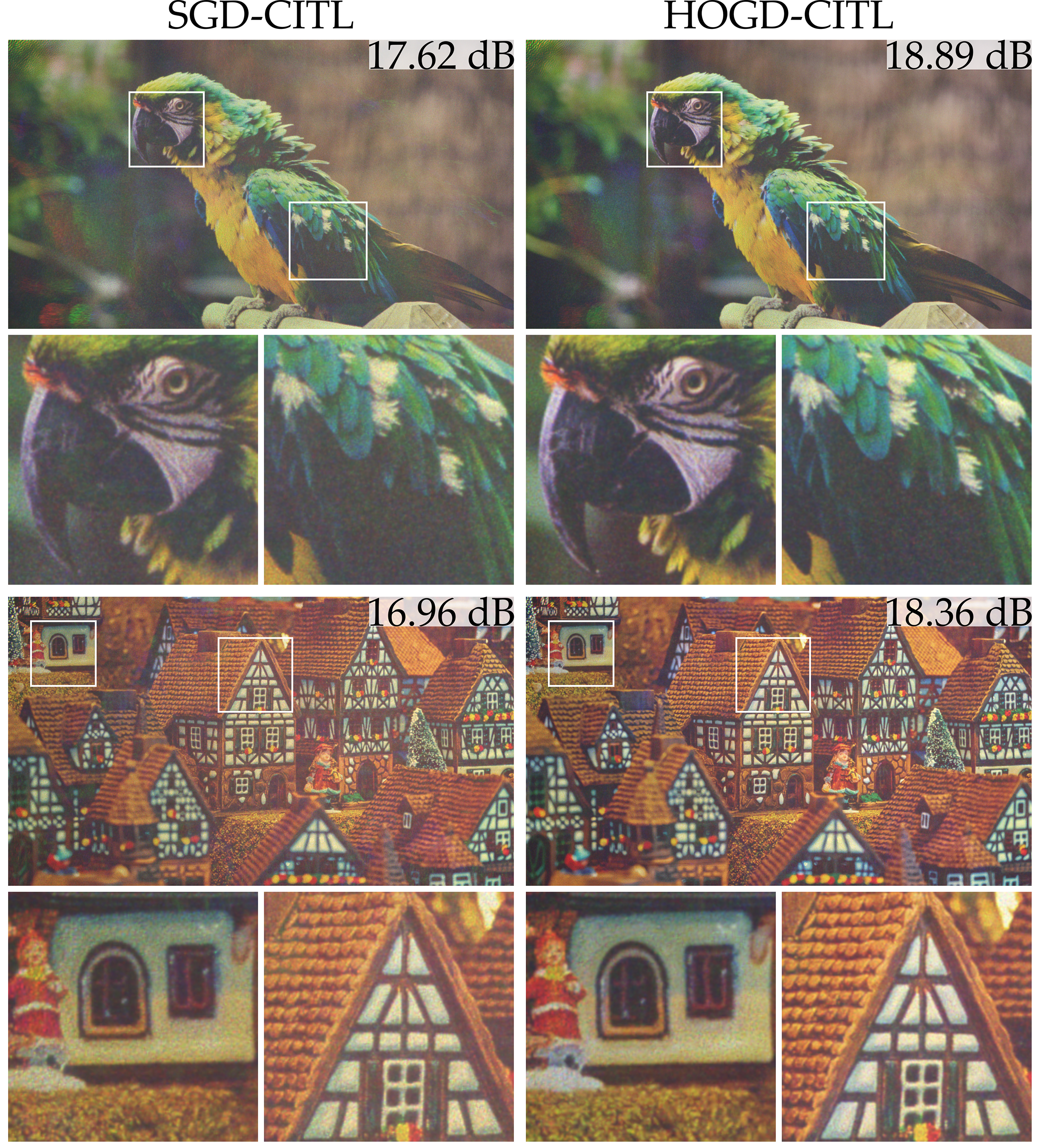ABSTRACT
Computer-generated holography suffers from high diffraction orders (HDOs) created from pixelated spatial light modulators, which must be optically filtered using bulky optics. In this work, we develop an algorithmic framework for optimizing HDOs without optical filtering to enable compact holographic displays. We devise a wave propagation model of HDOs and use it to optimize phase patterns, which allows HDOs to contribute to forming the image instead of creating artifacts. The proposed method significantly outperforms previous algorithms in an unfiltered holographic display prototype.
METHOD
 |
| Diagram of unfiltered holography setup. L1, collimation lens; P, polarizer; BS, beam splitter; L2-L3, 4f system; F, filter. The phase pattern, φ, displayed on the SLM produces a wavefront that propagates in free space, including high diffraction orders, at the target plane. For the filtering needed by prior works, a 4f system with a filter in the Fourier plane is placed. |
FILES
- Optics Letters Paper & Supplement (link)
- Source Code and Data (coming soon)
CITATION
M. Gopakumar, J. Kim, S. Choi, Y. Peng, and G. Wetzstein, Unfiltered holography: optimizing high diffraction orders without optical filtering for compact holographic displays, Opt. Lett. 46, 5822-5825 (2021)
BibTeX
@article{Gopakumar:21,
author = {Manu Gopakumar and Jonghyun Kim and Suyeon Choi and Yifan Peng and Gordon Wetzstein},
journal = {Opt. Lett.},
publisher = {OSA},
title = {Unfiltered holography: optimizing high diffraction orders without optical filtering for compact holographic displays},
volume = {46},
year = {2021}
}




